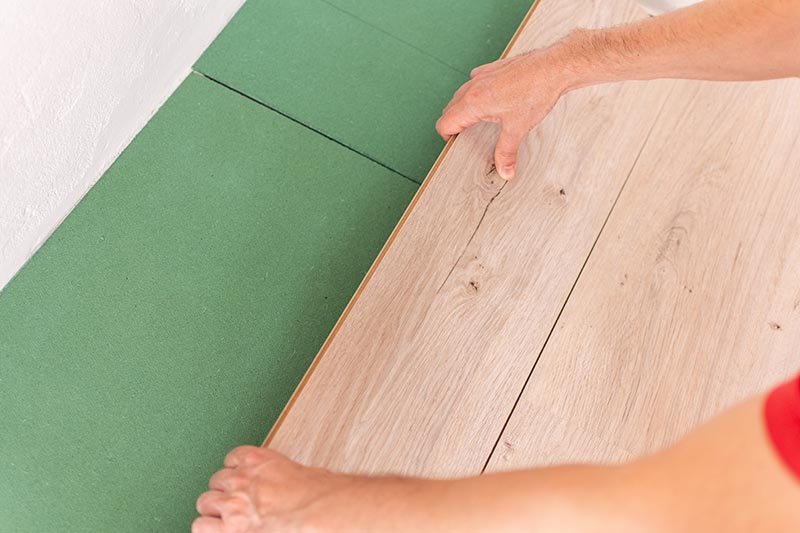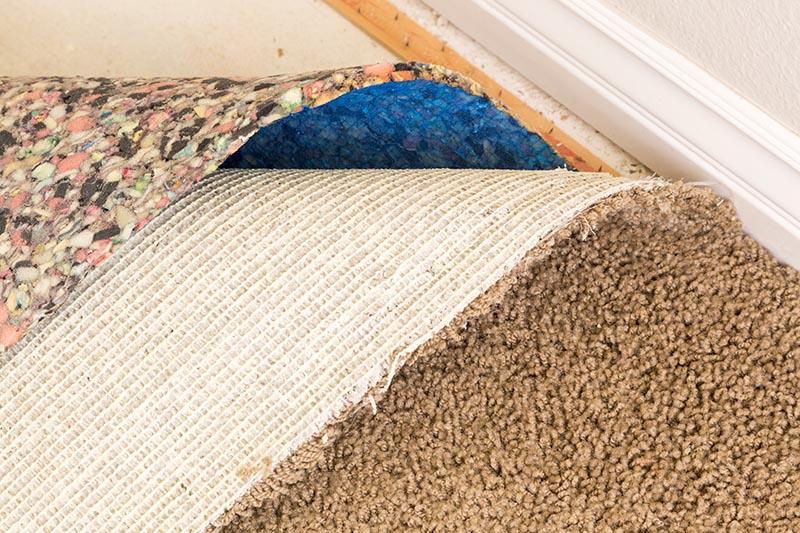How to Soundproof a Floor: 7 Tips & Tricks
-
Ed Malaker
- Last updated:

Noise can be a big problem in multilevel homes or apartment buildings. If you are looking to soundproof a floor but aren’t sure how to get started, you’ve come to the right place. Keep reading as we provide you with a list of tips and tricks that you can use to quiet things down.
The 7 Tips & Tricks On How to Soundproof a Floor
1. Interlocking Floor Mats
| Reason to Use: | Easy to install |
Interlocking floor mats are essentially thick floor tiles that resemble puzzle pieces that you connect across the floor to help create a noise-proof barrier. The pads can help absorb noise and the amount of noise produced in the first place. Another great advantage of this option is that it’s easy to remove if you don’t need it anymore.
2. Carpet Padding

| Reason to Use: | Doesn’t change the appearance of a room |
Carpet padding is an inexpensive way to reduce or even eliminate the noise between floors. You can purchase padding in large sheets, so it’s less expensive, and you don’t need to worry about what it looks like because the carpet will hide it. Thicker pads will suppress more noise and can help reduce the overall noise created.
3. Acoustic Underlayment
| Reason to Use: | Works well |
Acoustic underlayment will go underneath your carpet, linoleum, or another flooring material like carpet padding does. It has a special design that works better than many other materials to absorb or reflect sound, so not much will pass through to the floor below, providing one of the best barriers on this list. However, it can also be quite expensive, especially if you need to lift up your carpet or linoleum to install it.
4. Noise-Proofing Compound
| Reason to Use: | Easy to apply |
Noise-proofing compound is a great product that usually comes in a container similar to caulk, but you can also get it in a large bucket. You apply it to your drywall to create a noise-dampening barrier that helps reduce noise transference between floors and walls. It’s environmentally friendly and non-toxic, so you don’t usually need to hire a professional to use it. The downside is that it can get quite expensive because it goes on thick, so you need large amounts of product.
5. Deck Screws
| Reason to Use: | Works well |
If the main noise between floors comes from creaky boards and if you have access to the boards, you can use deck screws to quickly and easily fix the problem. Locate and mark each spot on the floor where the noise occurs. Then, drill a hole in the spot and use a deck screw to fasten a new floorboard beneath the creaking board. You can use a second or third screw to better keep the board in place. Use a drill with a counter sink so you don’t feel the new screws when you walk on them. When you finish, the noise will be gone.
6. Additional Flooring

| Reason to Use: | Can put over old flooring |
Adding a layer of flooring over your existing flooring can be a great way to help reduce the noise between floors. More mass will help prevent the sound waves from getting through, and you have the added advantage of being able to give the room a new appearance. The only downside is that it can be quite expensive compared to many other options on this list.
7. Rubber Floor Mats
| Reason to Use: | Easy to install |
If most of the noise you are experiencing is coming from footsteps, rubber floor mats are one of the easiest ways to reduce noise between floors without spending a great deal of money. You can move the mats around to where you need them, and there are no permanent changes made to the home. The rubber helps reduce the noise created by walking and helps absorb sound waves moving through the air. The only downside is that noise will still occur if people move off the mats when they walk.
- Always wear protective safety equipment, like safety gloves, eye protection, and a dust mask when cutting, sanding, drilling, or using compounds.
- Always work with plenty of ventilation and take frequent breaks.
- Always consult a flooring professional before making any permanent changes to your home.
- Make it against the rules to walk in the house with shoes on, especially during certain times of the day.
- A white-noise generator, like an air purifier, can help reduce the noise that you hear in your environment.
- Offer to purchase floor mats or other acoustic treatments for the floor above you if the noise bothers you. It takes the burden off the other tenants while alerting them to the problem.
Summary
Soundproofing your floor isn’t that difficult. Adding additional flooring or acoustic treatment can be effective but expensive, and you might need help installing it. Carpet padding and floor mats are far easier to install and less costly but may not be as effective. Fix creaky boards with a deck screw and a small floorboard to stop the noise and strengthen the floor.
Featured Image Credit: pundapanda, Shutterstock
Contents
